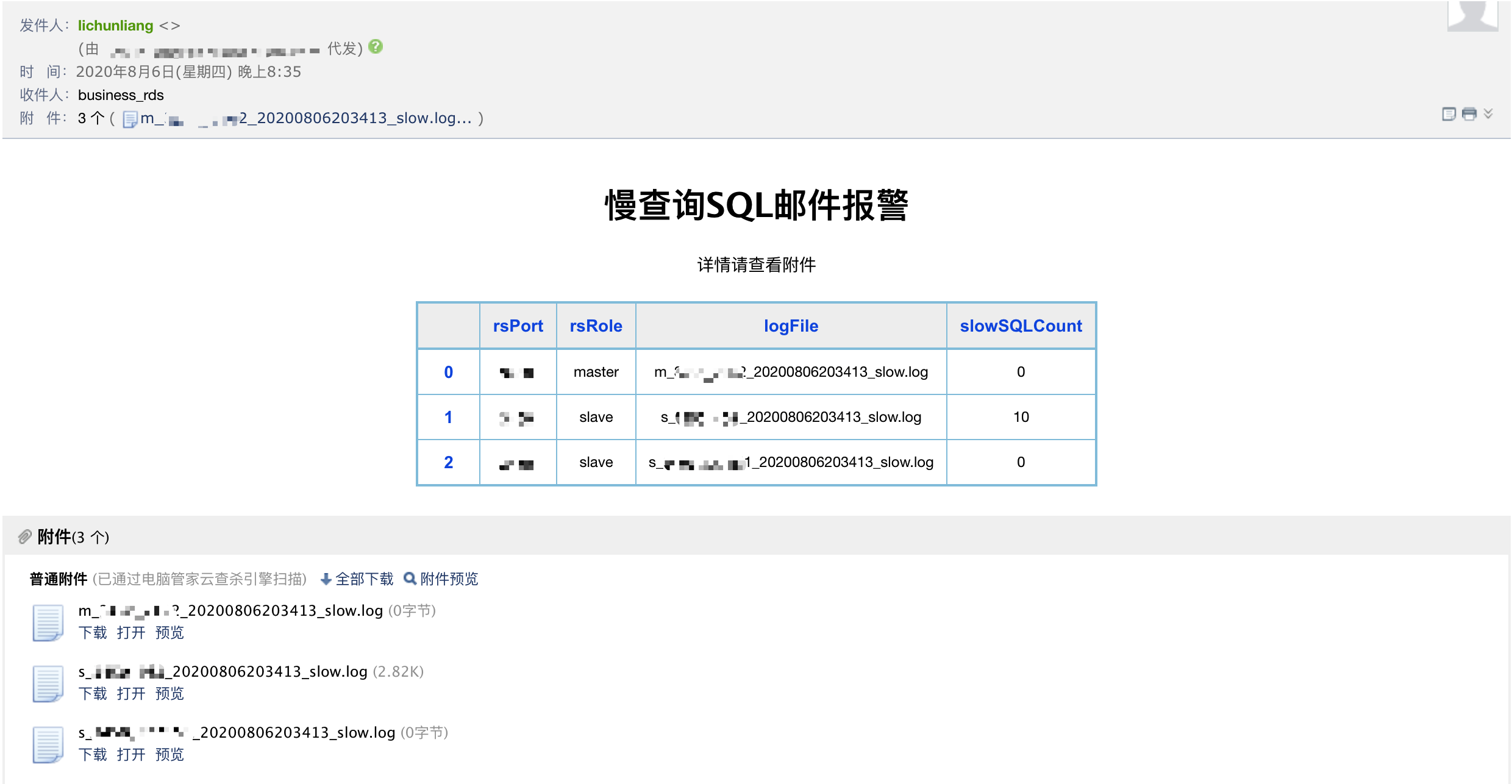1
2
3
4
5
6
7
8
9
10
11
12
13
14
15
16
17
18
19
20
21
22
23
24
25
26
27
28
29
30
31
32
33
34
35
36
37
38
39
40
41
42
43
44
45
46
47
48
49
50
51
52
53
54
55
56
57
58
59
60
61
62
63
64
65
66
67
68
|
def ExecutePtkillCmd(**info):
try:
ptkillCmd = "/opt/soft/percona-toolkit-2.2.14/bin/pt-kill --no-version-check " \
"--host {rsHost} --port {rsPort} --user 'dba' --password '5d63f33c10b8f430'" \
" --busy-time 2 --match-state='Sending data|Sorting result' --victim all " \
"--interval 1 --run-time 60 --daemonize --kill --print --log={ptkillLogFile}".format(**info)
status, ret = executeSSH('10.148.16.25', ptkillCmd)
if status == 0:
msg = "Execute {rsHost}:{rsPort} pt-kill command success.".format(**info)
return True, msg
else:
msg = "Execute {rsHost}:{rsPort} pt-kill command failed, Cmd:".format(**info), ptkillCmd
return False, msg
except Exception as err:
msg = "Execute {rsHost}:{rsPort} pt-kill command error.".format(**info), err
return False, msg
def GetFileRegixCount(**info):
try:
logPwd = info['ptkillLogFile']
process = Popen(['grep', '^# [0-9]\{4\}-[0-9]\{2\}-[0-9]\{2\}', logPwd], stdout=PIPE)
info['slowSQLCount'] = len((process.stdout).readlines())
msg = "Get {rsHost}:{rsPort} slow log count success.".format(**info)
return True, info
except Exception as err:
msg = "Get {rsHost}:{rsPort} slow log count err:".format(**info), err
log.error(msg)
return False, msg
{'rsHost': '1.1.1.1', 'rsPort': 3306, 'rsRole': 'master', 'logFile': 'm_3306_11_20200810084828_slow.log', 'ptkillLogFile': '/path/SlowLog/m_3306_11_20200810084828_slow.log', 'slowSQLCount': 0}
from time import sleep
def killSlowSql(info):
try:
status, msg = ExecutePtkillCmd(**info)
if status is False:
return status, msg
sleep(60)
return GetFileRegixCount(**info)
except Exception as err:
msg = "kill {rsHost}:{rsPort} {ptkillLogFile} err:".format(**info), err
return False, msg
from multiprocessing import Pool
def main(*HostInfoList):
try:
pool = Pool(8)
res_l = []
infoList = []
for info in HostInfoList:
base = pool.apply_async(killSlowSql, (info, ))
res_l.append(base)
pool.close()
pool.join()
for res in res_l:
ret = res.get()
infoList.append(ret[1])
return True, infoList
except Exception as err:
return False, err
|
